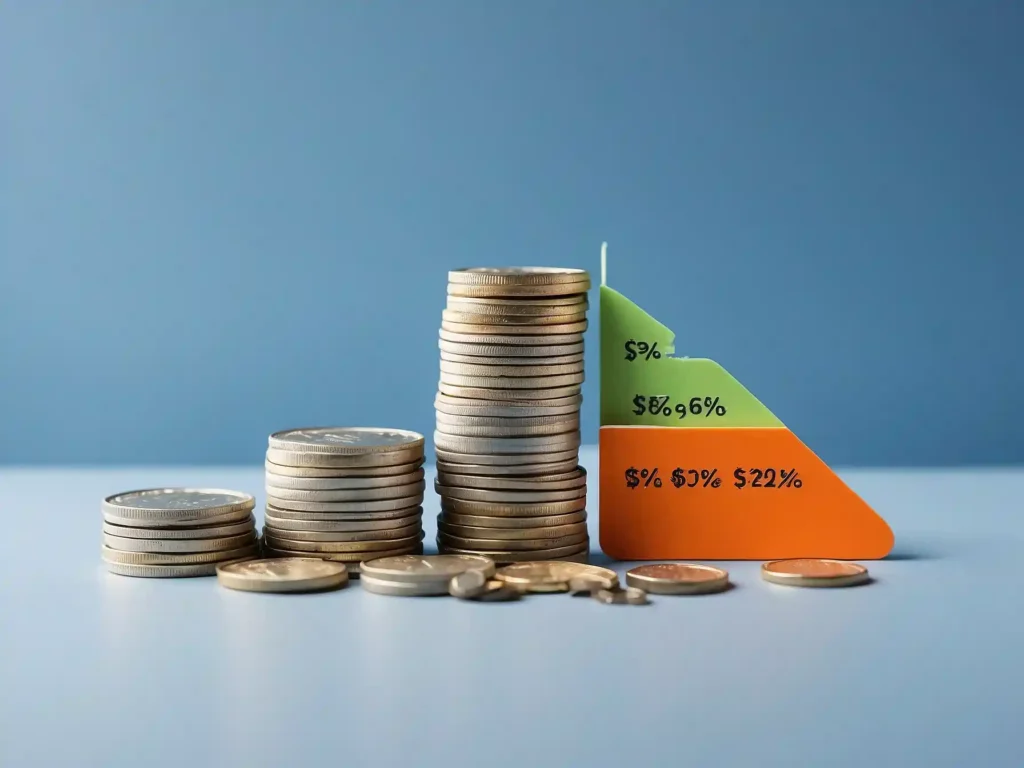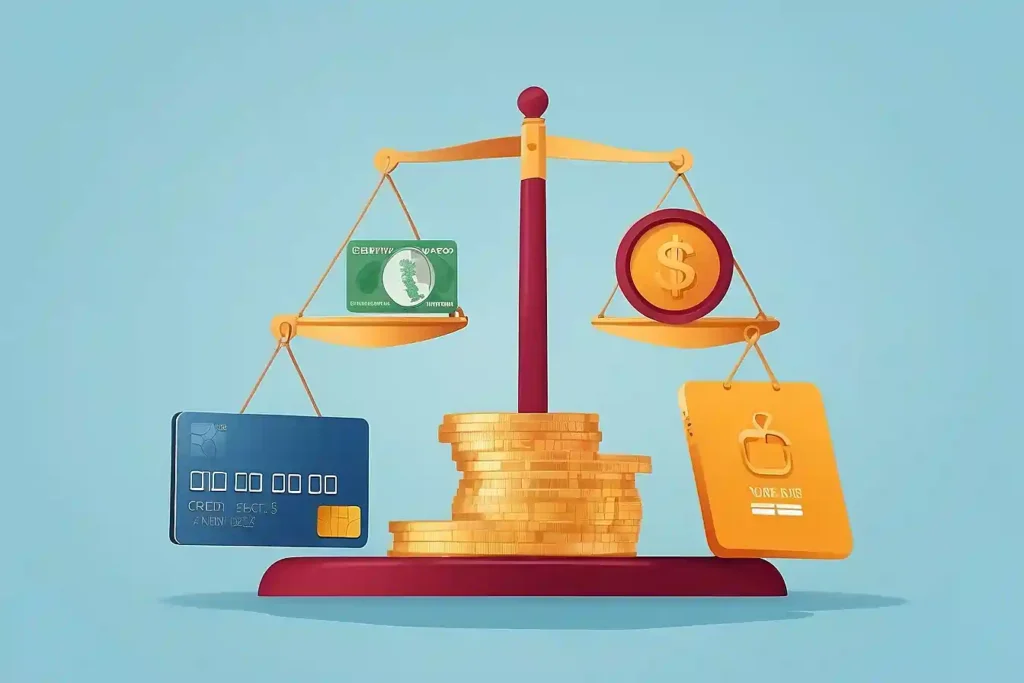Forget about Credit Utilization Ratio for a moment and think about your credit score. Have you ever had the feeling that your credit score is a mysterious and secretive number?
Well, your credit usage ratio is a major aspect that affects this highly desired score. But do not be worried, curious minds! Your guide will be this article, which will reveal the ins and outs of credit utilization and how it affects your financial health.
Credit: Understanding Revolving Credit Accounts
Let’s lay a solid foundation before getting into the specifics of credit utilization ratio. We’ll concentrate on revolving credit accounts because they’re the key to understanding how your credit utilization ratio moves.
Credit Cards: The Powerful Plastic
Yes, the reliable credit card. It’s your go-to partner when you swipe your way to regular purchases or to pay for that ideal trip. But keep in mind that responsibility comes along with wonderful convenience. Your credit card balance is increased with each swipe, which is an important factor in determining your credit use ratio.
Credit Lines: Flexible Borrowing
Another type of revolving credit is provided by credit lines, such as home equity lines of credit (HELOCs). These function like a personal ATM, letting you borrow money up to a predetermined amount and pay it back gradually. Your credit utilization ratio is influenced by the amount you still owe on a line of credit, just like it is with credit cards.
Understanding the Credit Utilization Ratio: A Powerful Percentage
Let’s now present the main attraction: the credit utilization ratio. It’s just a fancy way of saying that the percentage shows you how much credit you have available to you compared to how much credit you are really utilizing. Think of it as a gauge that shows you how much credit “fuel” you have left in your credit card.
The Method: Revealing the Secret
There is a simple formula to determine your credit usage ratio:
Credit Utilization Ratio = (Total Credit Card Balances / Total Credit Limit) x 100
Your credit utilization ratio, for instance, would be 30% (3,000 / 10,000 x 100) if your combined credit limit is $10,000 and your entire credit card balances equal $3,000.
Gathering Your Ammunition: Finding Balances and Limits
You will need certain information in order to calculate your credit utilization ratio. To determine your current balances, gather your most recent credit card bills.
Usually, your statements or online account will provide you with easy access to your credit limit information. So prepare yourself with this knowledge and be ready to uncover your credit usage ratio’s mysteries.

Why It Matters: The Impact of Your Credit Utilization Ratio
Now that you know what your credit usage ratio is, let’s explore why personal finance experts find it to be so influential.
The Credit Score's Gatekeeper and How It Impacts Your Score
Your credit score is significantly influenced by your credit utilization ratio, which can account for as much as 30% of the total score. Generally speaking, a lower credit utilization ratio corresponds to a higher credit score. Consider it your credit responsibility report card.
A low ratio shows that you can responsibly manage your credit, which makes you a more appealing borrower to lenders.
A Two-Sided Sword: Loan Approvals and Utilization
Your credit usage ratio can have a big influence on your capacity to get loans, such as personal, vehicle, and mortgage loans. A low ratio will help you qualify for better interest rates and improve your chances of getting approved for a loan.
On the other hand, a high credit usage percentage may cause lenders to become suspicious of you as an overextended and risky borrower. Unfavorable interest rates or loan denials could result from this.
Beyond Credit Scores: Utilization's Domino Effect
Your credit utilization ratio affects more than just loan approvals and credit scores. Your insurance prices may also be impacted, especially if you have auto and renters insurance. Because they view you as a bigger risk, insurers may raise your premiums if your credit usage ratio is high.
Managing Your Credit: Techniques for a Positive Credit Utilization Ratio
Now that you understand how crucial it is to keep your credit usage ratio low, let’s look at some doable tactics to hit this financial sweet spot.
Reduce Your Debt: Reducing the Stress
Paying down your current credit card debt is the easiest and most straightforward strategy. As a result, the credit utilization ratio formula’s numerator is decreased, lowering the final percentage.
Especially if they have high interest rates, give top priority to paying off the credit cards with the largest balances first. Recall that reducing your debt by one dollar represents a step toward improving your credit utilization ratio.
Using Cards Strategically: Dividing Love Throughout
While it’s important to have low credit card balances generally, your credit usage ratio may suffer if you fully charge one credit card while leaving the others unpaid. Think of using several cards in a calculated manner during the month. This spreads out how much of your credit you use on many accounts, keeping each one’s balance below its credit limit.
Think About Raising Credit Limits, But Make Good Use of Them
Requesting an increase in credit limit will help you lower your credit utilization percentage if you have a strong credit management history. Raising your credit limit lowers your overall utilization percentage since it raises the denominator in the formula.
Nonetheless, this method has two drawbacks. Increase your credit limit only if you are certain you won’t give in to temptation to overspend. Recall that greater responsibility comes with greater credit.

Beyond the Stats: The Path to Smart Financial Management
Increasing your credit utilization ratio is the first step toward achieving total financial wellness. The following are some extra actions to think about:
Budgeting Like a Boss: Taking Charge of Your Spending
A budget that you make and follow is essential to controlling your credit utilization ratio. You can avoid overspending on credit cards by keeping track of your income and expenses with the use of a budget. You’ll inadvertently reduce your dependency on credit and maintain control over your credit utilization ratio by organizing your purchases and setting priorities for your needs.
Creating an Emergency Fund as Your Safety Net in Finances
There will always be unexpected expenses in life. If you have a healthy emergency fund, you won’t have to use credit cards to pay for these expenses. Aim to accumulate an emergency fund with three to six months’ worth of living expenses.
In addition to giving you peace of mind, this financial safety net will stop you from maxing out your credit cards in times of need, which will eventually affect your utilization ratio.
Responsible Credit Habits: Building a Successful Financial Future
Maintaining a healthy credit utilization ratio and promoting general financial well-being are greatly aided by the development of good credit practices. When at all feasible, pay your credit card bills in whole and on time. Keep your balance low from month to month because compound interest may quickly build up and limit your financial success.
Remember that credit is a tool; make good use of it to secure a better financial future.
Conclusion
Your credit score, loan approvals, and even insurance prices are significantly impacted by your credit use ratio. You may maintain a low credit utilization ratio and create the foundation for a more secure financial future by realizing its significance and putting the above-mentioned tactics into practice.
Keep in mind that managing your credit responsibly is a marathon, not a sprint. You can attain your financial objectives and get the rewards of a favorable credit utilization ratio by being committed and using wise financial habits.
FAQ (Frequently Asked Questions)
Lenders and credit bureaus typically view a credit usage percentage of less than 30% as good. But some experts advise going even lower—ideally, somewhere between 10% and 15%. Your credit score is positively impacted by a lower credit use ratio.
Regularly checking your credit utilization ratio is a recommended practice. Every year, you can obtain your credit report at no cost from each of the three main credit reporting agencies: Experian, Equifax, and TransUnion. Along with your credit score, a lot of credit card issuers and personal finance applications offer options for monitoring your credit utilization ratio.
It is possible to raise your credit usage ratio in a timely manner. Reducing current credit card debt is the best course of action. You can also lower your ratio by carefully using many cards and, if you can handle it properly, ask for an increase in your credit limit.
Remain optimistic! If your credit utilization ratio is high, follow these steps:
- Make sure to pay off the bills on your credit cards. Sort credit cards based on interest rate priority order.
- Create and adhere to a budget. By doing this, you’ll be able to manage your money and stay away from using credit cards excessively.
- Move your balance to a card with 0% APR. This can let you temporarily avoid paying interest while you concentrate on reducing the principal. But be aware of balance transfer costs, and make sure you settle the amount before the introductory period expires.
Your credit usage percentage may be negatively impacted by closing a credit card account. It shortens your credit history, which can also have a negative impact on your credit score, but it also removes the credit limit linked to that card, possibly lowering your overall use. Even if you don’t use your older credit card accounts much, it’s generally a good idea to keep them active because a longer credit history is seen positively.
Souces:
- Consumer Financial Protection Bureau (https://www.consumerfinance.gov/)
- Experian (https://www.experian.com/)
- Equifax (https://www.equifax.com/)
- Federal Trade Commission (https://www.ftc.gov/)
